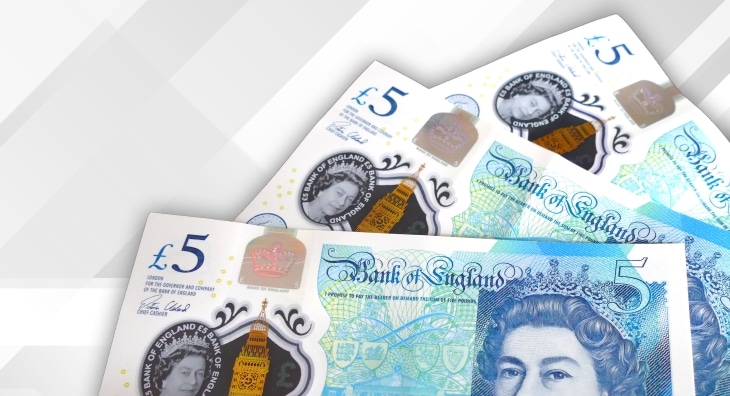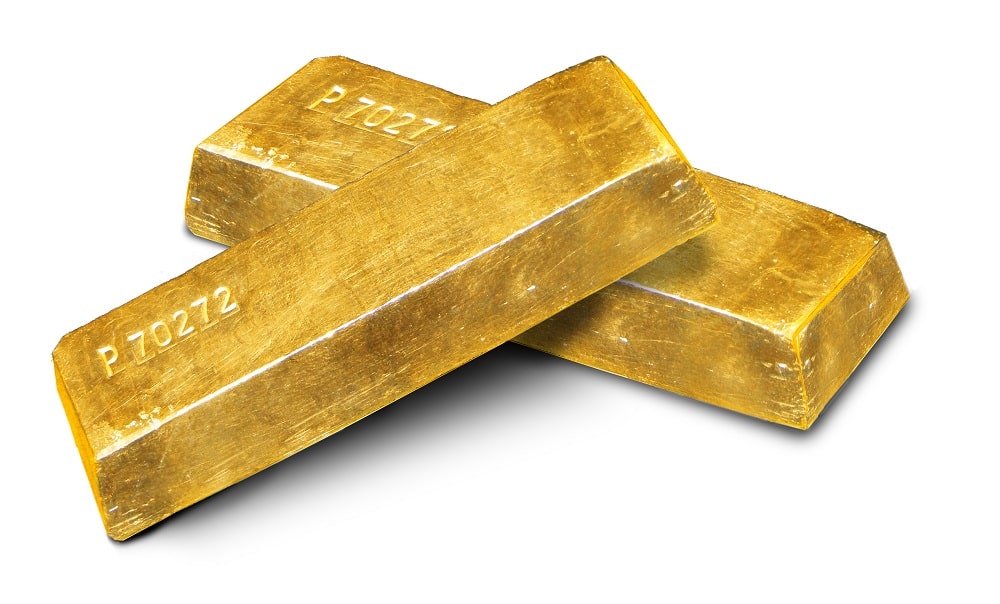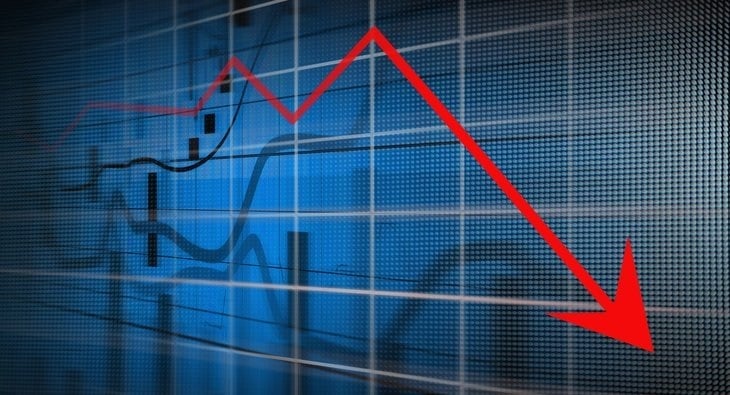Jasmine Birtles
Your money-making expert. Financial journalist, TV and radio personality.

This post is sponsored by Tally
Have you ever thought about what money is and where it comes from? Understanding the foundations could make a big difference when it comes to protecting your financial future.
What is money and where did the idea come from in the first place? This sounds like a simple enough question on the surface, but it’s not something we spend much time pondering over. Because for most of us, money is just a thing that we use.
Having a better understanding of money will not only open your eyes to the fragility of economies around the world, but how you are exposed to it and how you can improve your financial wellbeing. So, to help you get a better grasp on what’s actually in your wallet, we’ve created a guide that explains the fundamentals of money.
Keep on reading for the complete breakdown or click on a link below to jump straight to a section…
At its core, money should be a unit of account, a medium of exchange, and a store of value.
‘Medium of exchange’ is just a fancy term to explain something of an agreed value that can be used in exchange for goods and services.
The earliest systems of trade involved bartering. Perhaps your ancestors were great at making tools, but they also needed other things like food.
It was easy enough to trade tools for food, but what if your ancestors didn’t need food right away, or the people they were trading with didn’t need tools?
There needed to be something interchangeable for goods and services that represented an agreed value, so the buyers and sellers could get what they actually wanted or needed – not just what the other person was offering.
Enter money.

In most parts of the world, at various stages throughout history, commodities (i.e. things we use like gold, steel, wheat) were largely used as a form of money.
This is the reason US dollars are nicknamed ‘bucks’. Because, deerskins (or buckskins) were historically used as a medium of payment.
Fast forward to today, and widely useful commodities like oil and copper have value. But does that make them a good form of money? Nope.
Because, whether you’re walking around the wilderness or pounding the pavement of a big city, carrying piles of animal skins, barrels of oil, or metres of copper do not make for a particularly convenient payment method.
There are a few different properties that make ‘good money’.
In order for money to be as useful as possible, it should have the following characteristics:
Over the years there have been plenty of trial runs using different types of money.
But, most failed because they didn’t tick enough of the above boxes.
Gold was useful for a long time as commodity money because it met a lot of the ‘good money’ criteria, and the material itself has use. Even today, gold is sought after for jewellery and even used for electronics.
One of the major reasons gold has been so widely used as money throughout history is also because it’s held its value over time. Something that can’t be said for most other materials or forms of money.
However, until recently, using gold as a form of money came with its own obstacles like weight, storage, divisibility and acceptability. But, there may be a new solution that we’ll dive into a bit later.
So…what money are we using now?

At the moment, the bulk of the money used around the world is called ‘fiat money’.
Fiat money is currency that a government declares as legal tender.
However, this money has no intrinsic value, and it’s not backed by anything tangible.
The value is therefore largely determined by the reputation of the issuing government and, supposedly, the health of that country’s economy, and that’s about it.
It may surprise you to know that fiat money is actually a relatively recent invention.
Fifty years ago major currencies issued by governments like dollars and pounds were exchangeable for gold. This meant the government issuing the currency was restricted in the amount of currency they could issue by the fact they had to hold enough gold reserves to exchange all the money (coins, notes, cheques etc.) in circulation into gold at a promised exchange rate.
A pound is called a pound because it was supposed to be worth a pound of silver, and later a set weight of gold. Looking not particularly far back, you could pop into the bank and exchange your pound coins for silver or gold.
However, when World War I began, the British government decided to move away from the gold standard in order to print more money to finance the war, thus hugely devaluing the pound. Because you no longer could convert your pounds into gold and silver, the government didn’t have enough to back all the money they were creating.
This made it a lot cheaper for Britain to repay its debts, because it inflated much of the problem away.
But for ordinary people who owned pounds, they could only look on with despair as their wealth plummeted through the following decades. The pounds in their pockets were able to buy less and less as time went on.
Back in 1933 £1 was equivalent to US $5. A significant drop in the pound with the outbreak of WWII led the British government to peg the value of the pound to the US dollar – at that time £1 was equivalent to US $4 (today £1 buys only $1.20!). At the end of WWII in 1945 the British government pegged the UK pound to the US dollar and the US dollar was pegged to gold at an agreed exchange rate. But in 1971 the US had printed more US dollars than gold that it had and so the US government ‘floated’ the US dollar so they wouldn’t have to give away all their gold. At that point the pound and the dollar became fiat currencies (debt-based money with no asset backing).
Good question.
In the past, money had to represent something. Fiat money on the other hand, has nothing backing it except the good word of governments.
If we go back to our list of the properties that make good money, fiat currency does tick quite a lot of boxes around convenience but is not a good store of value.
Because fiat money has no link to any physical reserves, there are some worrying risks.
The biggest risk is inflation, or even worse – hyperinflation.
This is when fiat money drastically loses value because the supply increases, or people lose faith in the currency (or the government that issues it).
You might think this sounds unrealistic, but it’s happened all over the world in established countries like Germany, Hungary, Greece, and Austria.
Only recently, Zimbabwe has had to start minting and issuing gold coins because the national fiat currency has essentially become worthless. Turkey is also heading down a dangerous path with inflation nearing 80%.
When this happens, you won’t be able to buy anything with all the ‘money’ you own. You can protest, riot, take the Prime Minister out for lunch – nothing will make a difference.

There is no fixed or limited supply of fiat money, because it can be created ad infinitum – its not accountable to an asset.
This is why governments are able to increase the supply of fiat money at their discretion through quantitative easing (otherwise known as ‘money-printing’).
But, if you just press a few buttons to increase the money supply, are you actually creating any value? No.
This is something we’re struggling with right now in the UK and the US (and the EU and Japan, Singapore, Australia… you name it.).
The fiat money supply in most countries has increased massively. Even though most economies have been largely locked down of late.
Roughly 40% of all US dollars that have ever existed were created post-Covid. This is how crazy things have become. And remember fiat money is a debt – the country (and the country’s population) owes the debt.
So, what happens when you drastically increase the money supply without actually generating more value or output? The big, bad i-word…inflation.
This is why things now cost more and you keep hearing people talking about your pounds becoming worth less, and losing value each day.
The problem isn’t that prices are rising, the problem is that prices are rising in relation to fiat currencies. These fictional currencies are losing value and therefore you’re able to buy less and less with the same amount. Your bank balance may stay the same but you can’t buy as much stuff.
We know that throughout this article, we’ve presented a lot of problems and not a lot of solutions.
Frankly, this is because there aren’t many viable alternatives.
However, here at MoneyMagpie, we’re really excited to be working in partnership with Tally.
Tally is a groundbreaking alternative currency that’s backed by gold.
What makes it so interesting is that it tackles some of the traditional problems of using gold as money.
Back when technology was much more analogue, using gold itself was quite impractical as a medium of exchange. This is why notes and coins were used to represent an amount of gold that you could then access.
Tally uses technology and innovation to enable the value of physical gold to be used digitally as money.
Each unit of Tally represents physical gold that belongs to you and is securely vaulted in Switzerland on your behalf. But, you don’t have to ski through the Swiss Alps with a backpack if you want to use it.
You simply access your money online in your Tally Everyday Account. You can save, send or spend tally (i.e. your gold) at home or abroad (with no transaction costs of added FX charges), using the Tally App and Tally Debit Mastercard.
So you can interact with fiat currency and the global banking infrastructure, whilst keeping your money safe and protected from it.
So instead of using a made-up currency being devalued through monetary policy, you can hold your money in the most universally trusted store of value in the world, gold. And then spend it as you please, whenever and wherever you like.
The best part is that you don’t have to worry about your funds losing value because the government decides to increase the supply of pounds! And whilst the price of gold relative to pounds fluctuates in the short term, gold’s proven track record of holding its value over time whilst fiat currencies devalue, means using tally is a much safer bet than relying on the fiat currency economic experiment that we’re seeing the real consequences of now.
Download Tally here to get started.
Disclaimer: MoneyMagpie is not a licensed financial advisor and therefore information found here including opinions, commentary, suggestions or strategies are for informational, entertainment or educational purposes only. This should not be considered as financial advice. Anyone thinking of investing should conduct their own due diligence.
